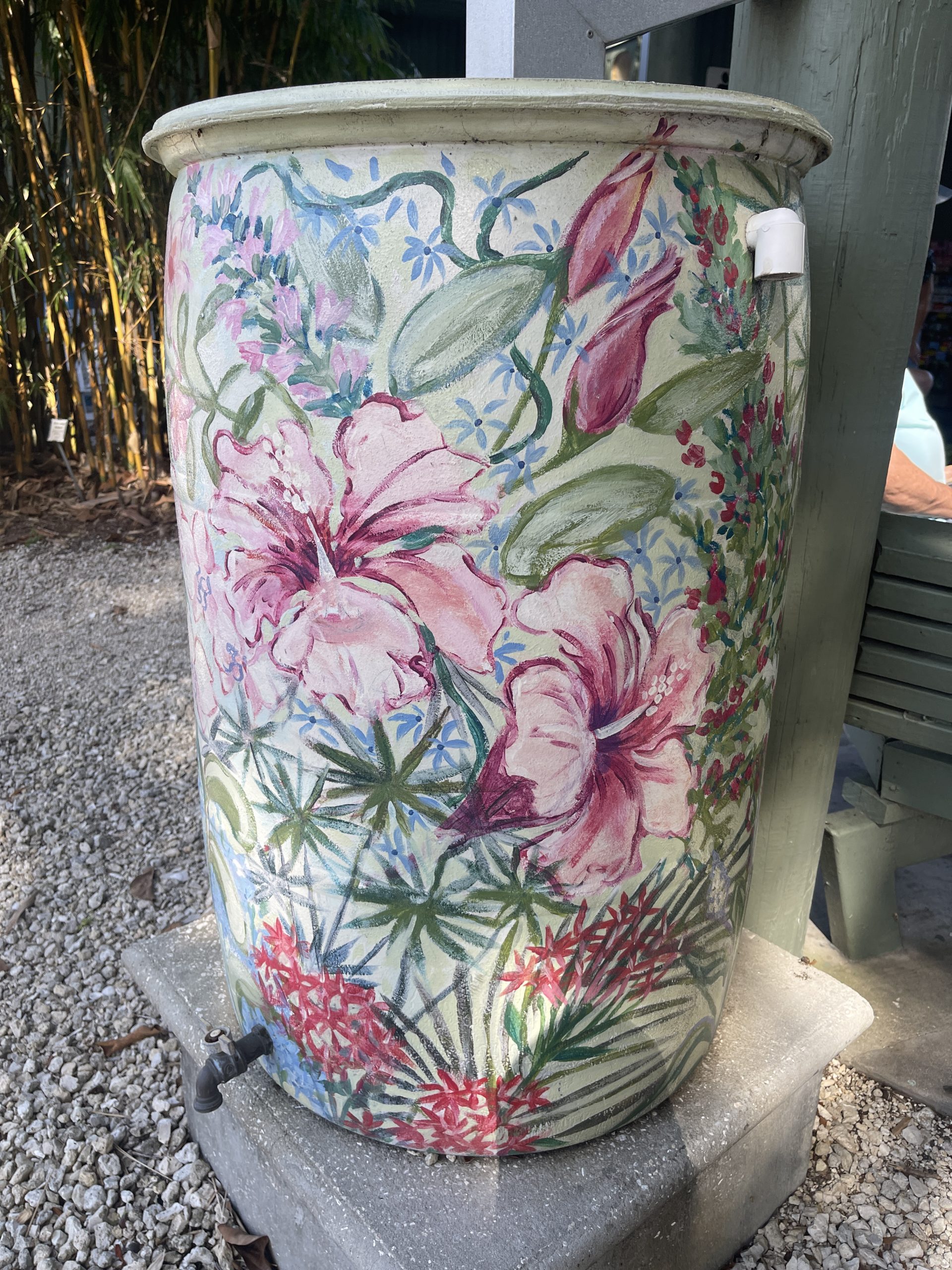Welcome to the lush landscapes of Southwest Florida! As you settle into your new home, you might find yourself drawn to the idea of adding some greenery to your surroundings. But before you start digging, it’s essential to understand the unique environment of this region and embrace sustainable landscaping practices. Let’s dive into what you can plant and how to do it responsibly.
- Understanding the Environment: Southwest Florida boasts a subtropical climate characterized by hot, humid summers and mild winters. This climate supports a rich variety of plant life, from vibrant palms to colorful flowering shrubs. However, it’s crucial to choose plants that are well-suited to the local conditions to ensure their survival. The Florida-FriendlyLandscapingTM program is a good place to start. A variety of free recorded webinars are available on demand to help connect you with

Rain barrels are a great way to capture stormwater for supplemental landscape irrigation during dry periods. Photo credit: Ashley Ellis relevant landscaping topics and resources. In Sarasota County, we offer a variety of Florida-Friendly oriented courses. To register for an upcoming class or Master Gardener Volunteer led tour, visit our Eventbrite page.
- Native Plants: One of the best ways to create a sustainable landscape is by incorporating native plants. These are species that have evolved to thrive in the local environment, requiring less water, fertilizer, and maintenance. Native plants also provide vital habitat and food sources for local wildlife, promoting biodiversity. To locate a native plant nursery near you, visit the Florida Association of Native Nurseries (FANN) website or consider joining your local Native Plant Society chapter to learn about the native plants in your region.
- Water-Wise Landscaping: Water conservation is a pressing concern in Southwest Florida, where droughts are not uncommon. To minimize water usage in your landscape, opt for drought-tolerant plants that can withstand periods of dryness without wilting. Additionally, consider installing rain barrels to collect water for irrigation and using mulch to retain moisture in the soil. Using drought tolerant plants, practicing water conservation and using mulch are three of the nine Florida-Friendly LandscapingTM principles. Visit the low-maintenance blog series for plant recommendations featuring groundcovers, ornamental grasses, wildflowers and more.
- Avoiding Invasive Species: When selecting plants for your garden, steer clear of invasive species that can outcompete native plants and disrupt fragile ecosystems. Check with local nurseries or extension offices for guidance on identifying and avoiding invasive species in your area. By choosing non-invasive plants, you can help preserve the natural beauty of Southwest Florida for future generations. To learn more about invasive plants and recommended management strategies, visit the Center for Aquatic and Invasive Plants.
- Creating Wildlife Habitat: Transform your backyard into a haven for local wildlife by planting native species that provide food, shelter, and nesting sites for birds, butterflies, and other creatures. Incorporate a variety of plant types, including trees, shrubs, and perennials, to attract a diverse array of wildlife to your garden. For more information on supporting wildlife visit the Living Green page.
- Maintenance Practices: Sustainable landscaping extends beyond plant selection. Adopting eco-friendly maintenance practices such as composting, supporting beneficial insects, and minimal chemical use can further reduce your environmental impact and promote the health of your garden.
While it’s exciting to enhance your outdoor space with new plants, it’s essential to do so responsibly in Southwest Florida. By choosing native species, conserving water, avoiding invasive plants, and creating wildlife habitat, you can create a beautiful and sustainable landscape that reflects the natural beauty of this unique region. Visit the Sarasota County Starter Kit page for more information on how to live sustainably in Sarasota County. Happy planting!
Declaration of Generative AI and AI-assisted technologies in the writing process
During the preparation of this work, the author used ChatGPT to help build the blog post. After using this tool/service, the author reviewed and edited the content, and takes full responsibility for the content of the publication.
 1
1
